15 Jun 2018
Aeronautical Engineering Group Design Project Presentations 2018
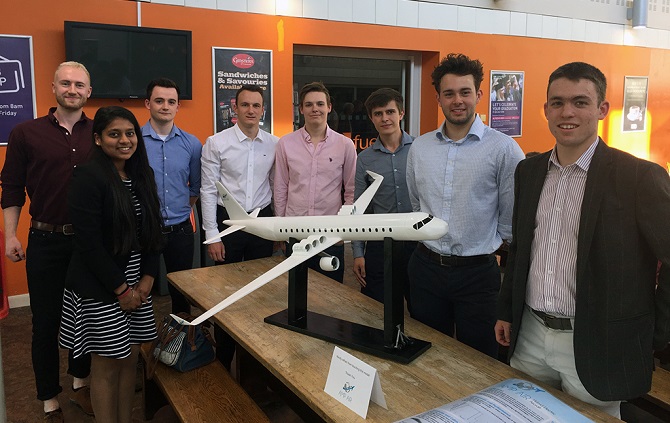
On 12th June, seven groups of Loughborough University Aeronautical Engineering students displayed their group design work for students, academics and external visitors at an event hosted by Loughborough University and the Loughborough branch of the Royal Aeronautical Society, (RAeS.)
Students conducted presentations on their work, to the RAeS after showing their work and this was followed by a well earned drinks reception.
The models on display were:
“AmpAir” Hybrid Electric Airliner (top photograph)
AmpAir is a Hybrid Electric Airliner projected to enter service in 2030. It has a stage length of 1000 nautical miles. The high aspect ratio folding wing allows efficient flight whilst maintaining CAT C airport span requirements. The aircraft utilises two two-spool high bypass geared turbofans to produce 75% of the flight thrust. The remaining 25% of the thrust is produced by six 0.5MW ducted fans. These are powered by a DC Turbo-generator located in the belly of the aircraft. Using this method offers a significantly reduced SFC as well as a lower noise signature compared with competitor aircraft.
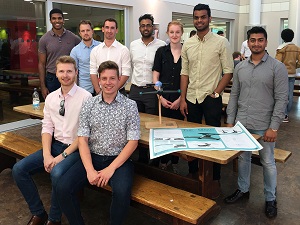
“The MAKO” Recreational Wing-in-Ground-Effect Vehicle
The MAKO is an exciting, new recreational water sport vehicle that brings the fast-paced thrill of flight to the marine watercraft market. Utilising the Wing-in-Ground Effect, the MAKO is able to fly close to the water at speeds up to 85 kilometres per hour, achieving a total endurance of 1 hour and 24 minutes and a maximum range of 121 km. The MAKO operates within the legislation of the International Maritime Organisation, permitting it to be operated without a pilot’s licence. The craft will be sold to private owners and rental companies around the world, bringing a novel water sport experience to the masses.
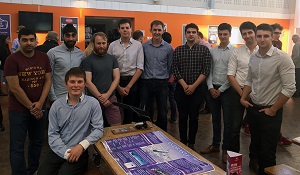
“Andraste” ‘Attritable’ UAV
The Andraste aircraft provides a novel solution to the idea of an attritable aircraft – a low cost, semi-expendable autonomous system. This versatile airframe could increase capability of air forces across the world. Specifically designed with the Royal Air Force in mind, the Andraste provides an aerial platform for intelligence gathering and the capability to be easily converted into a strike configuration at the end of its service life thus fulfilling both Intelligence Surveillance Target Acquisition and Reconnaissance (ISTAR) and Suppression of Enemy Air Defences (SEAD) roles.
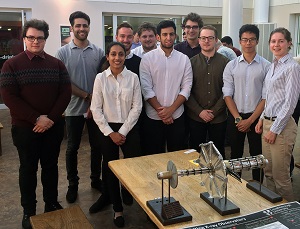
“Amplius” Orbiting X-Ray Observatory
Amplius is an orbiting X-ray observatory, designed to investigate the formation of black holes and the distribution of hot gas clusters in deep space. Amplius is part of the ESA’s Cosmic Vision programme, which runs from 2015-2025. The planned mission lifetime is 5 years, with an option to extend to 10 years, orbiting at the Sun-Earth L2 Lagrange point. Amplius has the largest focal length of its kind, 25m, allowing it to see further than ever before.
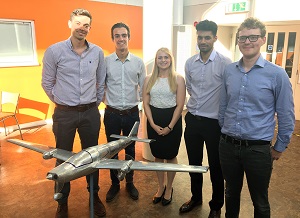
“HEGAAsus” Hybrid Electric General Aviation Aircraft
The HEGAAsus family of aircraft brings the latest development in hybrid powertrain technology to the 4 and 6 seat general aviation market, carrying its passengers up to 1000nmi at speeds in excess of 200kts. Thanks to its hybrid powertrain, which optimises energy utilisation through two electric motors and a diesel engine, fuel burn is reduced by up to 50% compared to its nearest competitors. The HEGAAsus is due to enter into service in 2028 and aims to mark a step change in air travel.
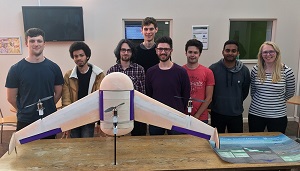
“MediFetch” Medical Express UAS
(Poster and aircraft only)
There has been a long-standing need for rapidly accessing remote locations with limited infrastructure, particularly transporting medical supplies in large and less developed countries. Medifetch is a fully-autonomous Unmanned Aerial System (UAS) that aims to fulfil this need. The 6kg tail-sitter aircraft can deliver or collect a small amount of medical supplies between several locations within a 60km radius, in under one hour. A vertical take-off and landing capability enables operations from constrained environments, such as residential gardens, which can be visually indicated with a ground target. The Medifetch system is the future of emergency medical logistics.
“Phoenix” Unmanned Aircraft System
Team Newton Works is the Loughborough University entrant to the 2018 IMechE Unmanned Aerial Systems Challenge for which teams are to design, build, and demonstrate an autonomous humanitarian disaster relief aircraft. The system must autonomously air drop packages onto ground targets and identify alphanumeric ground targets. This year, the team aims to double the previous payload capacity to 4kg and utilise on-board independent image recognition system. With these key innovations, a highly modular and competitive system has been produced with a view to upholding Loughborough University’s high standing within the competition.
Visitors had this to say about the event:
“This was, once again, a very satisfying way to conclude the Branch’s annual programme” – Mike Hurst, Royal Aeronautical Society Branch Committee member
“The students all gave excellent presentations that showed off their designs and were a credit to the department. The evening was once again received positively by all those present.” – Dr James Knowles
The School of AACME (Aeronautical, Automotive, Chemical and Materials Engineering) offers its congratulations to the Teams on their work and we look forward to hearing how “Phoenix” performs at the UAS Challenge next week!
